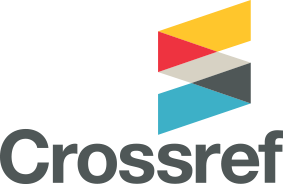Type of Article : Original Research
Year: 2016 | Volume 4 | Issue 4 | Page No. 1600-1602
Date of Publication: 11-08-2016
DOI: 10.16965/ijpr.2016.146
FUNCTIONAL INDEPENDENCE IN POST OPERATIVE SPASTIC CEREBRAL PALSY CHILDREN WITH REHABILITATION
Deepika Sharma *, Smati Sambyal, Sandeep Kumar.
University College of Physiotherapy, Faridkot, Punjab, India.
E-Mail: sharma.deepika.089@gmail.com
Background and Purpose: Cerebral palsy is a well recognized neurodeveoplemental condition beginning in early childhood and persisting through the life span [1]. With CP, the inability to control and co-ordinate voluntary muscle results in poor selective control of muscle activity. The motor disorders are often accompanied by disturbances of sensation, perception, cognition, communication, and behaviour, by epilepsy and by secondary musculoskeletal problems [2]. Treatments for cerebral palsy, therefore focuses on how best to help the individual maximize his or her potential. Children with cerebral palsy typically receive physical therapy to facilitate motor development and to enhance their independence in motor skills, self care and play and leisure activities. The purpose of the study was to determine enhancement in functional independence in children with spastic cerebral palsy. 39 children, having age between 3to 8 years, underwent surgery which involves Tendo-achillis lengthening and plantar release of bilateral lower limbs. After that 17 received physical therapy while 20 children were only taught about the physical therapy program whereas 2 were drop out. The physical therapy includes 5 types of exercises, home protocol and gait training.
Result and Conclusion: children who received physical therapy show improvement in functional independence as compared to those children who does not receive physical therapy. So, it can be concluded that the children who underwent surgery followed with physical therapy was more independent in their activities of daily living as compared to children who underwent only surgical procedure.
Key words:Cerebral Palsy, Tendoachillis Lengthening, Plantar Release, FIM, Rehabilitation.
References
- Freud S (1897). Functional impairment in children with cerebral palsy In,Brno:NCONZO,2006.
- Ketelaar.M, Vermeer. A, Hart. H, Van Petegem-van Beek. E, Helders P.J. Effects of a functional therapy program on motor abilities of children with cerebral palsy. Phys Ther.2001;81(9):1534-15345.
- Bax M, Goldstein M, Rosenbaum P, et al.: Proposed definition and classification of cerebral palsy. Dev Med Child Neurol, 2005;47:571-576. [Medline]
- Elder GC, Kirk J, Stewart G, et al.: Contributing factors to muscle weakness in children with cerebral palsy. Dev Med Child Neurol, 2003;45:542–550. [Medline]
- Gormley ME: Treatment of neuromuscular and musculoskeletal problems in cerebral palsy. Pediatr Rehabil, 2001;4:5-16. [Medline]
- Lampe R, Grassl S, Mitternacht J, et al.: MRT-measurements of muscle volumes of the lower extremities of youths with spastic hemiplegia caused by cerebral palsy. Brain Dev, 2006;28:500-506. [Medline]
- Wiley ME, Damiano DL: Lower-extremity strength profiles in spastic cerebral palsy. Dev Med Child Neurol, 1998;40:100-107. [Medline]
- Goh HT, Thompson M, Huang WB, et al.: Relationships among measures of knee musculoskeletal impairments, gross motor function, and walking efficiency in children with cerebral palsy. Pediatr Phys Ther, 2006;18:253-261.
- Moreau NG, Simpson KN, Teefey SA, et al.: Muscle architecture predicts maximum strength and is related to activity levels in cerebral palsy. Phys Ther, 2010;90:1619–1630.
- Thorpe DL. On “Muscle architecture predicts maximum strength” Moreau NG, Simpson KN, Teefey SA, Damiano DL. Phys Ther. 2010;90:1619– 1630. Phys Ther, 2011;91:436, author reply 437
- Elder GC, Kirk J, Stewart G, et al.: Contributing factors to muscle weakness in children with cerebral palsy. Dev Med Child Neurol, 2003;45:542-550. [Medline] [CrossRef]
- Gormley ME: Treatment of neuromuscular and musculoskeletal problems in cerebral palsy. Pediatr Rehabil, 2001;4:5-16.
- Cuomo. A.V, Gamradt. S.C, Kim. C.O, Pirpiris. M, Gates. P.E, Mc Carthy. J.J, Otsuka. N.Y. Health- related quality of life outcomes improve after multilevel surgery in ambulatory children with cerebral palsy. J Pediatr Orthop.2007;Sep;27(6):653-657.
- Abel, Mark.F, Damiano, Diane. L.Pannuzio, Micheal,Bush, Jeffery. Muscle-tendon surgery in diplegic cerebral palsy: Functional changes and mechanical changes.1999;19(3)366-375.
- Zorer.G, Dogul.C, Albayrak.M, Baquatur.A.E.The results of single-stage multilevel muscle- tendon surgery in the lower extremities of patients with cerebral palsy. Acta Orthop Traumato Turc.2004;38(5):317-325.
Deepika Sharma, Smati Sambyal, Sandeep Kumar. FUNCTIONAL INDEPENDENCE IN POST OPERATIVE SPASTIC CEREBRAL PALSY CHILDREN WITH REHABILITATION. Int J Physiother Res 2016;4(4):1600-1602. DOI: 10.16965/ijpr.2016.146

